#botany knowledge
Explore tagged Tumblr posts
Text
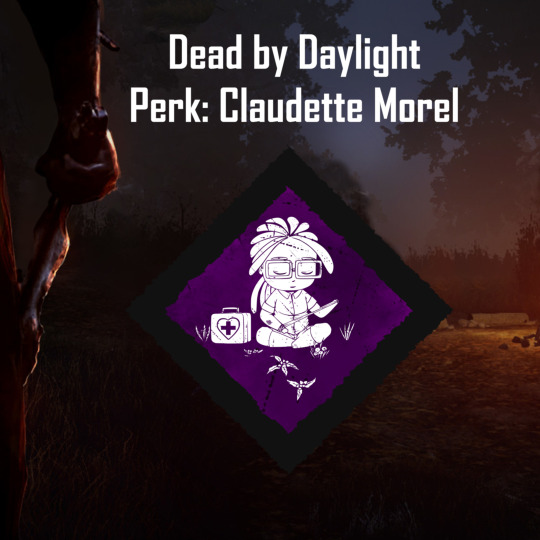
Claudette Morel perk, self caring thanks to her botany knowledge.
#claudette morel#dead by daylight#dbd#etsy#dbd perks#claudette morel the survivor#self care#medkit#botany knowledge#chibi#digital file
1 note
·
View note
Text
In the Willamette Valley of Oregon, the long study of a butterfly once thought extinct has led to a chain reaction of conservation in a long-cultivated region.
The conservation work, along with helping other species, has been so successful that the Fender’s blue butterfly is slated to be downlisted from Endangered to Threatened on the Endangered Species List—only the second time an insect has made such a recovery.
[Note: "the second time" is as of the article publication in November 2022.]
To live out its nectar-drinking existence in the upland prairie ecosystem in northwest Oregon, Fender’s blue relies on the help of other species, including humans, but also ants, and a particular species of lupine.
After Fender’s blue was rediscovered in the 1980s, 50 years after being declared extinct, scientists realized that the net had to be cast wide to ensure its continued survival; work which is now restoring these upland ecosystems to their pre-colonial state, welcoming indigenous knowledge back onto the land, and spreading the Kincaid lupine around the Willamette Valley.
First collected in 1929 [more like "first formally documented by Western scientists"], Fender’s blue disappeared for decades. By the time it was rediscovered only 3,400 or so were estimated to exist, while much of the Willamette Valley that was its home had been turned over to farming on the lowland prairie, and grazing on the slopes and buttes.
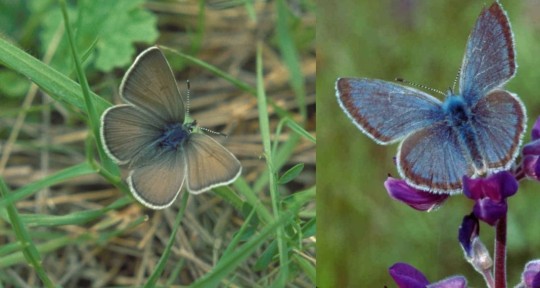
Pictured: Female and male Fender’s blue butterflies.
Now its numbers have quadrupled, largely due to a recovery plan enacted by the Fish and Wildlife Service that targeted the revival at scale of Kincaid’s lupine, a perennial flower of equal rarity. Grown en-masse by inmates of correctional facility programs that teach green-thumb skills for when they rejoin society, these finicky flowers have also exploded in numbers.
[Note: Okay, I looked it up, and this is NOT a new kind of shitty greenwashing prison labor. This is in partnership with the Sustainability in Prisons Project, which honestly sounds like pretty good/genuine organization/program to me. These programs specifically offer incarcerated people college credits and professional training/certifications, and many of the courses are written and/or taught by incarcerated individuals, in addition to the substantial mental health benefits (see x, x, x) associated with contact with nature.]
The lupines needed the kind of upland prairie that’s now hard to find in the valley where they once flourished because of the native Kalapuya people’s regular cultural burning of the meadows.
While it sounds counterintuitive to burn a meadow to increase numbers of flowers and butterflies, grasses and forbs [a.k.a. herbs] become too dense in the absence of such disturbances, while their fine soil building eventually creates ideal terrain for woody shrubs, trees, and thus the end of the grassland altogether.
Fender’s blue caterpillars produce a little bit of nectar, which nearby ants eat. This has led over evolutionary time to a co-dependent relationship, where the ants actively protect the caterpillars. High grasses and woody shrubs however prevent the ants from finding the caterpillars, who are then preyed on by other insects.
Now the Confederated Tribes of Grand Ronde are being welcomed back onto these prairie landscapes to apply their [traditional burning practices], after the FWS discovered that actively managing the grasslands by removing invasive species and keeping the grass short allowed the lupines to flourish.
By restoring the lupines with sweat and fire, the butterflies have returned. There are now more than 10,000 found on the buttes of the Willamette Valley."
-via Good News Network, November 28, 2022
#butterflies#butterfly#endangered species#conservation#ecosystem restoration#ecosystem#ecology#environment#older news but still v relevant!#fire#fire ecology#indigenous#traditional knowledge#indigenous knowledge#lupine#wild flowers#plants#botany#lepidoptera#lepidopterology#entomology#insects#good news#hope
4K notes
·
View notes
Text


Elios proposed to Terra with 2 dozen red roses under the wisteria tree where he had first told her that he loved her as children. Even though he was too nervous to say anything, she knew what he was trying to convey through the flowers. She always did.
24 roses - I am yours.
#dungeon meshi#dungeon meshi oc#my art#oc lore#they were both 45 years old (in dwarf years)#he rizzed her up with knowledge of botany#ignore the fact that she’s already wearing their wedding rings on her ear#I forgot#he dressed up in elf clothing because he though that’s what she liked#he’s a dork#too bad he di-#also he’s trying so hard not to accidentally look down at her chest
20 notes
·
View notes
Text
the secret to having a respectful conversation with stem bros is to infiltrate their discord server with no identifying information and let them assume you're a stem bro
#the second they found out i was me i suddenly lost all credibility#life is so awesome#this like.only applies to cs math and physics#i went to an eco club meeting today for shits and giggles because i fucking love botany and they were instantly like hey we're always#looking for knowledgeable people to come here and help us out and think you're pretty smart like...thank you . finally#my plant iding skills finally came in handy somewhere#i love plants plants are so good. plants unite us
7 notes
·
View notes
Text
@insane-inthe-membrane9000
DONNIIEEEE!!!!!
Look at this flower
I love it!
What is it?! Is it a lily?!

#luxwashere#husband#i require your botany knowledge#help#rise of the tmnt#help me husband#rottmnt#tmnt#rottmnt au#rise au#aged up characters#original character#donnie x oc#prince consort of hell#princess of hell#rise future donnie#rise tmnt#rottmnt donatello#donatello x original fem character#donatello x original character#hamato donatello#luciana morningstar#lucifer's daughter#the evening star
17 notes
·
View notes
Text
#vote with your heart or your botany knowledge or your sense of humor whichever sparks joy#if it was fighting for one plot probably kudzu#ivy (derogatory) is a strong contender for most annoying personally#but mint is the vicious little maniac that - like a liquid - will fill any container you put it in#crabgrass is stubborn but also perfectly fine as a lawn if you don't care about fancy aesthetics#some brambles can grow 3 inches in a day! wild#and foxtails are coming with YOU#polls#plants#op
102 notes
·
View notes
Text

tiktok makes me feel so incredibly smart
#i know i studied botany but isn’t it common knowledge that all fruits come from flowers#i am so confused by what she means#07
6 notes
·
View notes
Text
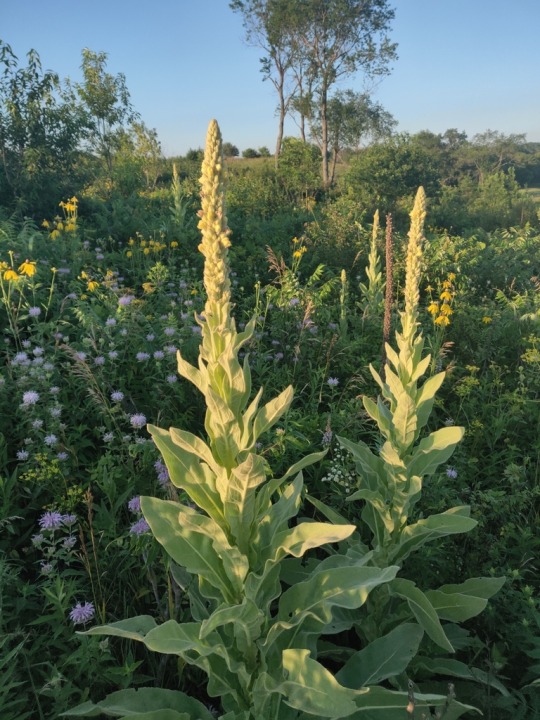
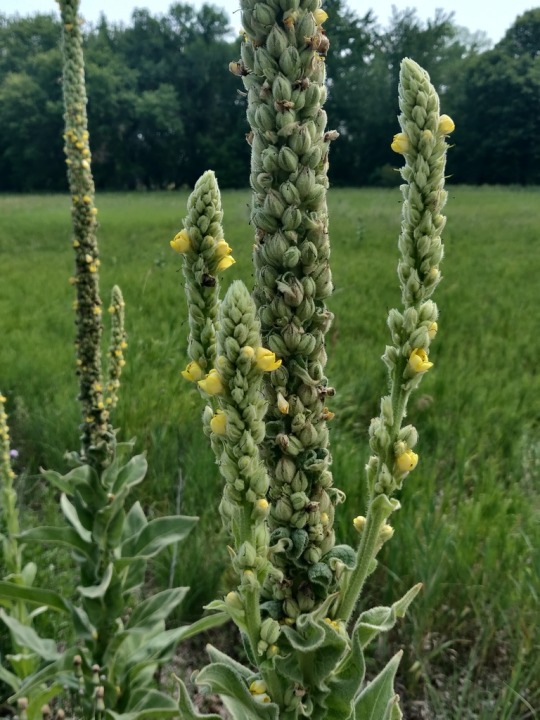
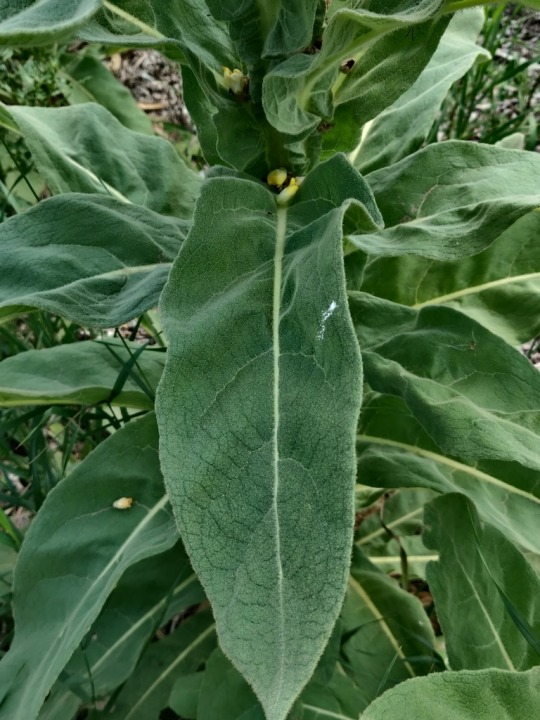
Great mullein, Verbascum thapsus
Native to Europe, Northern Africa, and Asia, and invasive throughout the United States and Australia. It has many traditional uses, including to treat lung ailments and skin irritations. It's also known as "natures toilet paper" due to its large and soft leaves.
#plants#foraging#traditional medicine#nature#naturalist#great mullein#forager#ecologist#ecology#biologist#biology#traditional ecological knowledge#north america#photography#mine#plant#botany#midwest#nature photography
21 notes
·
View notes
Text
Your muse: returns from the Underdark, bearing forages plants and mushrooms, and is asking everyone what is what and there is a pale carrot-turnip shaped thing everyone is trying to figure out in particular. No one knows, everyone thinks it’s poisoned or unhealthy, everyone is theorizing, making jokes.
Minthara: the ONE canonical hobby Gardener in camp marches up and RIPS it out of their hand and glares at them, holds their eye, takes a bite and walks away eating it like they are an idiot.
Everyone is too shocked to say anything.
#[ 🕷️ ] —— musings#[ I invented a crunchy apple like fruit ]#[ with this precise mental image I call it fools pie ]#[ cause it looks like a big turnip but it crunches like an apple and is actually really sweet ]#[ but no one knows about it cause very few know a LOT of in depth Underdark botany ]#[ and no one has thought to ask a drow or survived to spread knowledge- ]#[ no but hey don’t forget she gardens for a hobby ]
9 notes
·
View notes
Note
smash or pass erenville 🤔
ooh I actually think Cala would pass! He's pretty, but it's more about personality than looks. She tends to be impulsive and often acts with her heart more than her head. He's more even keeled and logical. They don't have enough similarities in that respect to have good chemistry, even if they do get along.
[Send Smash or Pass + a name and my muse will say if they would smash or pass on that person]
#they have a lot of fun conversations when they find something in common w their botany and animal knowledge though!#he's also just not her physical type which is often on the muscular side 😂#ffxiv#replies#oc: calantha lenn#smash or pass
3 notes
·
View notes
Text
"In response to last year’s record-breaking heat due to El Niño and impacts from climate change, Indigenous Zenù farmers in Colombia are trying to revive the cultivation of traditional climate-resilient seeds and agroecology systems.
One traditional farming system combines farming with fishing: locals fish during the rainy season when water levels are high, and farm during the dry season on the fertile soils left by the receding water.
Locals and ecologists say conflicts over land with surrounding plantation owners, cattle ranchers and mines are also worsening the impacts of the climate crisis.
To protect their land, the Zenù reserve, which is today surrounded by monoculture plantations, was in 2005 declared the first Colombian territory free from GMOs.
...
In the Zenù reserve, issues with the weather, climate or soil are spread by word of mouth between farmers, or on La Positiva 103.0, a community agroecology radio station. And what’s been on every farmer’s mind is last year’s record-breaking heat and droughts. Both of these were charged by the twin impacts of climate change and a newly developing El Niño, a naturally occurring warmer period that last occurred here in 2016, say climate scientists.
Experts from Colombia’s Institute of Hydrology, Meteorology and Environmental Studies say the impacts of El Niño will be felt in Colombia until April 2024, adding to farmers’ concerns. Other scientists forecast June to August may be even hotter than 2023, and the next five years could be the hottest on record. On Jan. 24, President Gustavo Petro said he will declare wildfires a natural disaster, following an increase in forest fires that scientists attribute to the effects of El Niño.
In the face of these changes, Zenù farmers are trying to revive traditional agricultural practices like ancestral seed conservation and a unique agroecology system.
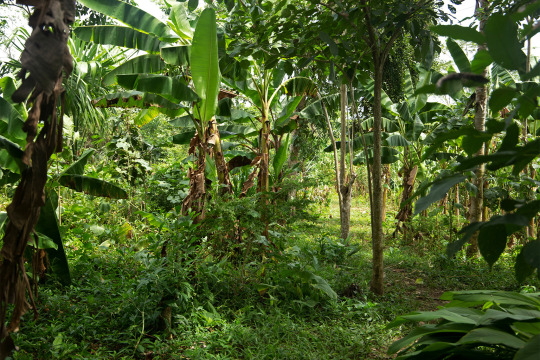
Pictured: Remberto Gil’s house is surrounded by an agroforestry system where turkeys and other animals graze under fruit trees such as maracuyá (Passiflora edulis), papaya (Carica papaya) and banana (Musa acuminata colla). Medicinal herbs like toronjil (Melissa officinalis) and tres bolas (Leonotis nepetifolia), and bushes like ají (Capsicum baccatum), yam and frijol diablito (beans) are part of the undergrowth. Image by Monica Pelliccia for Mongabay.
“Climate change is scary due to the possibility of food scarcity,” says Rodrigo Hernandez, a local authority with the Santa Isabel community. “Our ancestral seeds offer a solution as more resistant to climate change.”
Based on their experience, farmers say their ancestral seed varieties are more resistant to high temperatures compared to the imported varieties and cultivars they currently use. These ancestral varieties have adapted to the region’s ecosystem and require less water, they tell Mongabay. According to a report by local organization Grupo Semillas and development foundation SWISSAID, indigenous corn varieties like blaquito are more resistant to the heat, cariaco tolerates drought easily, and negrito is very resistant to high temperatures.
The Zenù diet still incorporates the traditional diversity of seeds, plant varieties and animals they consume, though they too are threatened by climate change: from fish recipes made from bocachico (Prochilodus magdalenae), and reptiles like the babilla or spectacled caiman (Caiman crocodilus), to different corn varieties to prepare arepas (cornmeal cakes), liquor, cheeses and soups.
“The most important challenge we have now is to save ancient species and involve new generations in ancestral practice,” says Sonia Rocha Marquez, a professor of social sciences at Sinù University in the city of Montería.
...[Despite] land scarcity, Negrete says communities are developing important projects to protect their traditional food systems. Farmers and seed custodians, like Gil, are working with the Association of Organic Agriculture and Livestock Producers (ASPROAL) and their Communitarian Seed House (Casa Comunitaria de Semillas Criollas y Nativas)...
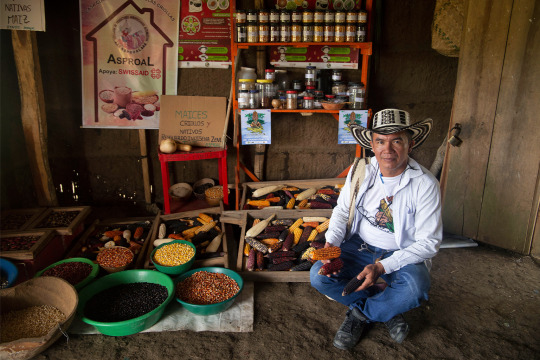
Pictured: Remberto Gil is a seed guardian and farmer who works at the Communitarian Seed House, where the ASPROL association stores 32 seeds of rare or almost extinct species. Image by Monica Pelliccia for Mongabay.
Located near Gil’s house, the seed bank hosts a rainbow of 12 corn varieties, from glistening black to blue to light pink to purple and even white. There are also jars of seeds for local varieties of beans, eggplants, pumpkins and aromatic herbs, some stored in refrigerators. All are ancient varieties shared between local families.
Outside the seed bank is a terrace where chickens and turkeys graze under an agroforestry system for farmers to emulate: local varieties of passion fruit, papaya and banana trees grow above bushes of ají peppers and beans. Traditional medicinal herbs like toronjil or lemon balm (Melissa officinalis) form part of the undergrowth.
Today, 25 families are involved in sharing, storing and commercializing the seeds of 32 rare or almost-extinct varieties.
“When I was a kid, my father brought me to the farm to participate in recovering the land,” says Nilvadys Arrieta, 56, a farmer member of ASPROAL. “Now, I still act with the same collective thinking that moves what we are doing.”
“Working together helps us to save, share more seeds, and sell at fair price [while] avoiding intermediaries and increasing families’ incomes,” Gil says. “Last year, we sold 8 million seeds to organic restaurants in Bogotà and Medellín.”
So far, the 80% of the farmers families living in the Zenù reserve participate in both the agroecology and seed revival projects, he adds."
-via Mongabay, February 6, 2024
#indigenous#ecology#agroforestry#agriculture#traditional food systems#traditional medicine#sustainable agriculture#zenu#indigenous peoples#farming#colombia#indigenous land#traditional knowledge#seeds#corn#sustainability#botany#plant biology#good news#hope#climate action#climate change#climate resilience#agroecology#food sovereignty
1K notes
·
View notes
Text
Listen. Because of SV’s teachers and cool classes and stuff at their universities. My brain is like. Pokespe teacher au. Not at paldea but in a similar format I guess. My brain has come up with these:
Red - Botany Teacher, still the champion of Kanto but only fights nowadays to defend his 25 year champion title streak and if the world is ending again. He will give you the ability to plant berries anywhere in Kanto and If you talk to him every other day he'll give you a rare berry.
Yellow - art teacher. They mostly go fishing on the weekends and also only fights with their Pokémon if the world is ending. If you talk to them on weekends they’ll give you the old fishing rod, the good fishing rod, the super fishing rod, and light clay. After those are obtained they gift you items that in some way help you escape battle (think pokedoll, cleanse tag etc)
Green - hes the Pokémon battling instructor. Much like Chuck he’s strict with battle stances and the fundamentals, though unlike his mentor he gives encouragement and makes sure his students know when they’ve done well. Talk to him on weekdays and he will give you random held items.
Blue - she is the biology teacher (comes from her “evolver” title :]) and is mostly silly with her students but knows how to make information stick in their heads. She’s the unanimous “cool teacher” without actually trying to be. If you talk to her on Thursday Friday or Saturday she will gift you random evolution items.
#pokespe#i have thoughts on the gsc trio and rs duo as well but explaining my thoughts for gold will require like a whole seperate post#pokespe teacher au#sure lets call it that#trainer red#trainer yellow#trainer green#trainer blue#sugartalks#also red is botany because hes always had a close relationship with nature and wants to share his knowledge with students.#and also he doesnt like exclusively battling anymore he just wants to Live His Life
69 notes
·
View notes
Text









All thanks to grandma & grandpa for instilling the knowledge of botany and self sustainability in me.
#botany#berries#figs#sunflower#green#south louisiana#louisiana#homegrown#garden#pears#herbs#spices#muscadine#peppers#jalepeño#onions#garlic#fig tree#seeds#seed#from seed to serenity#thank you#thankful#grandparents#knowledge#plants#plantbased#mine
3 notes
·
View notes
Quote
Most people like a big tree. Really doesn’t matter what political party you are, what language you speak. We all speak big tree.
Fred Breglia quoted in an article by Steve Featherstone at New York Upstate. Upstate New York tree hunter just discovered the biggest tree in NY (maybe the biggest of its kind in the nation)
A link to an article from the Carneigie Museum of Natural History about the Eastern Cottonwood mentions a project funded by the National Science Foundation, The Mid-Atlantic Megalopolis Project, to digitize specimen collections around the region. It's a good thing!
16 notes
·
View notes
Text


I made Pokeberry and Honeysuckle girlfriends.
#my art#oc#original art#original character#honeysuckle#Pokeberry#botany#plants#gathering#cottagecore#goblincore#do they match those aesthetics?#idk but the plants sure do#only gather what you're knowledgeable about#Pokeberry is poisonous!#sketch#pencil#doodle#other tags or whatever
1 note
·
View note
Text
i got some levels on my adam i am ready to be a minor annoyance to killers <3
#💀#i wanna run deliverance with resilience tbh. since i just found out it gives you broken for a while#also wanna run autodidact with botany knowledge once i get claudette prestiged#or put it on claudette if i get adam prestiged first...whichever#but i just got done playing. for now i work on requests
3 notes
·
View notes